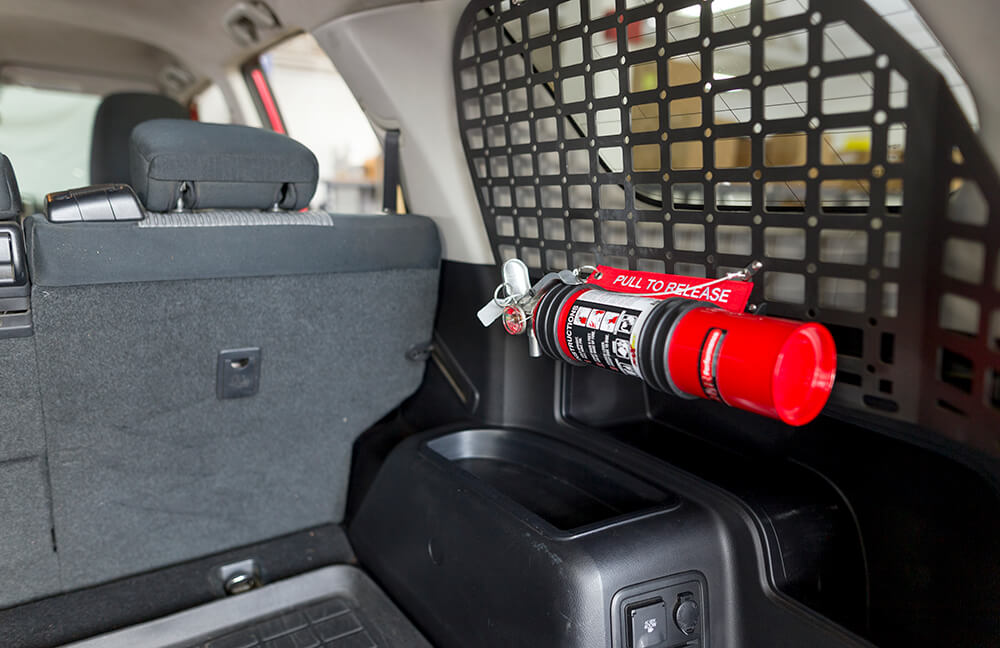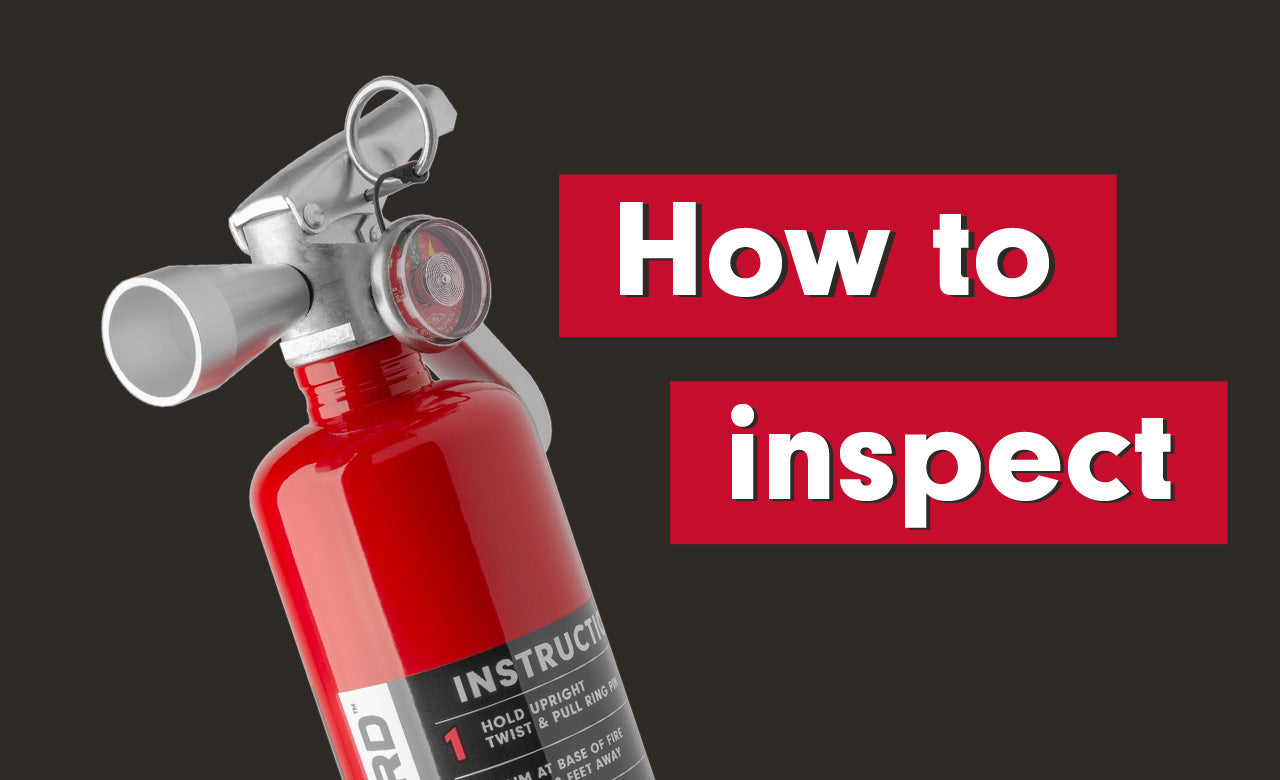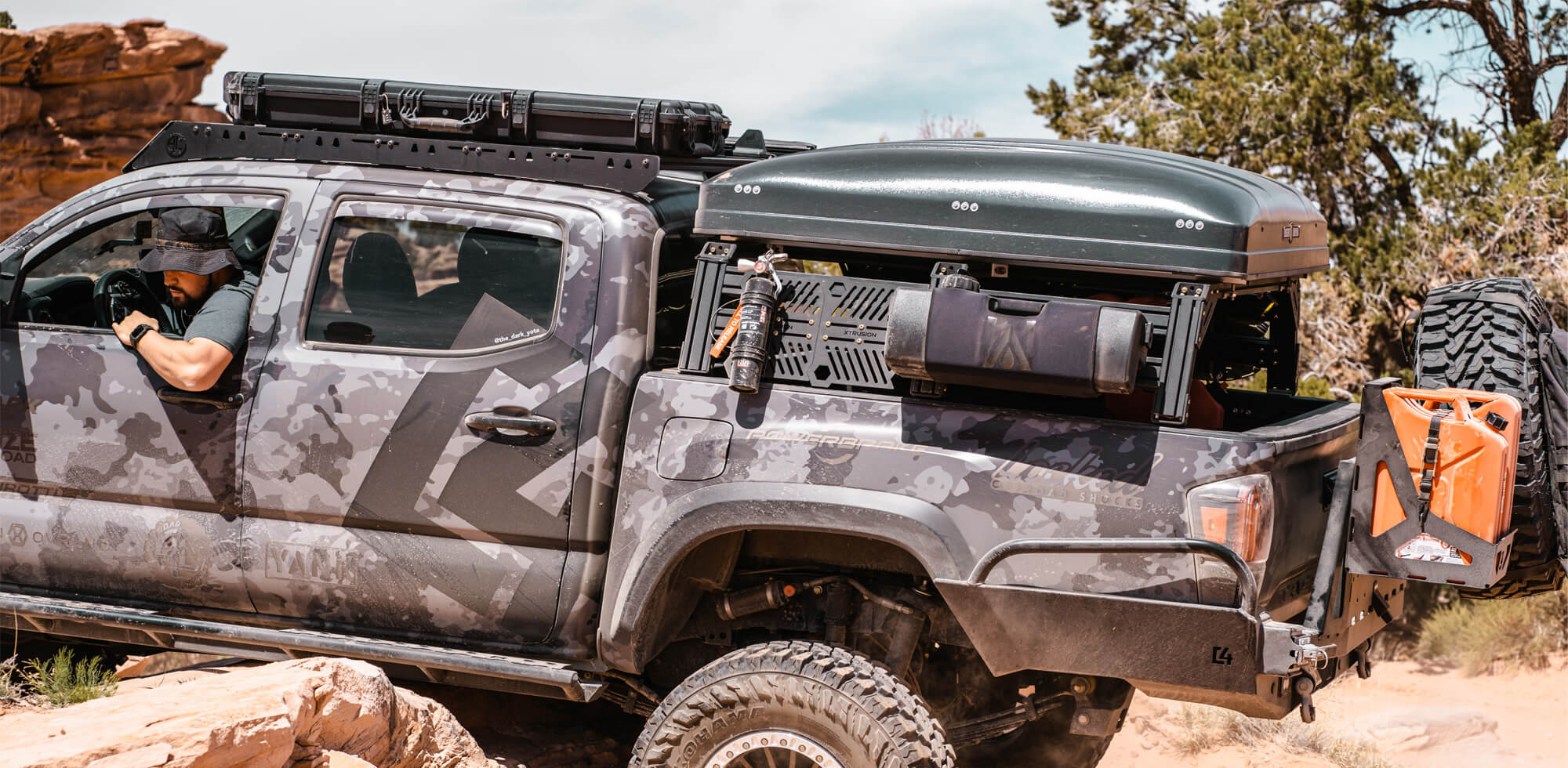In this episode of FireTalk, we interview ice climber and overland adventurer Grant Stanely about his experience putting out a fire in his Toyota 4Runner. When the electrical fire started while he was out in the wild, Grant had an HalGuard HG250R at his fingertips. The extinguisher was mounted to an NB300 Extreme Duty Quick Release Bracket, which, in turn, was mounted to the SM01BK seat mount attached to the Toyota’s front seat. Grant provided great insight into what can happen when such a disaster strikes, how to be prepared, and the importance of keeping an extinguisher within reach.
FireTalk serves you useful tips on vehicle fire extinguishers and their use, with interviews and real-life examples of what works - and what doesn’t - in a fire situation. Whether you are driving a prepper vehicle, a modified import, or a daily driver, we share tips and tricks to make your fire preparedness more practical and effective.
Interviewer:
Welcome, everybody. I just want to say hi and thank you to Grant Stanley for joining us. Hi, Grant!
Grant: Hi!
Interviewer:
So you have had to use an H3R Performance extinguisher. What happened? What caused the fire?
Grant:
I was going ice climbing and I was driving up this mountain road and it was kind of bumpy. I had actually bought my H3R extinguisher because I had this fear that I would someday be going over a washboard, and it would cause something to short out in my electrical system causing a fire. So I was driving along and all of a sudden I started smelling something and I went “Hmm, something is burning.” And I kept driving and I went “Oh no something INSIDE of my truck is burning!”
I had my extinguisher mounted underneath my driver’s seat, which was the perfect location for it. I reached down, grabbed it, got under the hood, and put the fire out. It had burned through a 2 gauge wire, completely gone, and I actually have little burn marks throughout all my wire harnesses. So I'm taking it back to the dealer who installed the electrical and they're going to have the fun task of replacing all those wire looms.

Interviewer:
So do you know what caused it or do you need them to take a look and tell you?
Grant:
No, I know it caused it. I had batteries in battery trays instead of battery boxes and the dealer had placed, well first you ground out the negative, but then they had placed the positive of one of the other batteries on the other side of the vehicle. So my aux battery, the positive side, was facing the frame, and then both batteries were grounded out to the frame. So when it shifted it arced over into the frame.
I think it was 1500 cold-cranking amps that went through my vehicle. I burned the headliner and my lungs hurt for the next day just from the fumes.
Interviewer:
That sounds intense! What kind of vehicle were you driving?
Grant:
I have a pretty modded-out 4Runner. I actually built a bunk in the back so that I can sleep in it. I'm putting an Espar heater in so that I can actually have a heater and a thermostat, it's a lot of fun. But, I kind of knew with all those modifications that having a fire extinguisher (nods). I've got one under my seat and then I also have one in the back in my bunk. I knew with all those modifications that nothing had gone through the testing that a normal engineer would put something through and so I kind of had an inkling that fire was a likely possibility.
Interviewer:
Yeah, that's smart. I mean we have a lot of customers in the same situation where they've done a lot of modifications. This is exactly the setup we recommend, especially for people who are doing a lot of Overlanding is the HalGuard upfront within reach if you have an engine fire and then the MaxOut in back. So when you're out camping when you're out doing other stuff, if someone else is a vehicle catches fire, and you have a backup because if you're out and about on your own that's all you have.

Grant:
I was really glad that I had the HalGuard under my seat and two and a half pounds was enough to get the initial fire out. But I also travel with a tool kit, and because it started to light back up because it was an electrical fire, I then undid all the batteries. But you're still just kind of like “if this thing lights back up. I'm out of my HalGuard and I'm just gonna have to use the MaxOut and just get it out.”
Interviewer:
How quickly did it put it out? When you discharged it did you completely empty it?
Grant:
Yeah, I completely emptied it. So, every time I washed my car I wash the mats and pull the fire extinguisher, and practice. Because I had a buddy die ice climbing in 2020. At the beginning (pre-COVID) 2020 he died ice climbing from a heart attack. It's amazing how blank your mind goes when something like that goes wrong. I actually lost the insole of my mountaineering boot during that, I lost a glove, I just lost a lot of things. Because it was just like he's up there on the top of this pitch and he's dying. You just short out. So I knew you had to practice quite a bit in order to have it be really fluid.

But it was really fast, really simple. It came naturally to pull the hood, but then not open up all the way. And then with the electrical fire, the majority of the fire was behind the firewall in the engine bay, but it's burning throughout the whole vehicle. So having that Max out to be like OK, I got the engine fire out. I get the primary fire out, but it's still smoldering throughout the headliner and stuff, and over the wire looms. It was really nice having both fire extinguishers.
Interviewer:
I'm very sorry about your friend!
Grant:
Sometimes when I tell these stories it feels like I am prone to accidents, but I actually I'm just out a lot. I try to go on an adventure once every two weeks. The more time you spend outside in the wilderness the more situations you're going to get yourself into and you need to make sure you’ve got the kit to rescue yourself.
Actually what made me buy the HalGuard, was I was ice climbing. Ice climbing maybe is the theme. Maybe you shouldn't go ice climbing? That's when the fire started. I was going ice climbing. My friend died ice climbing. But we were camping, going ice climbing and somebody broke into our car. They broke out the driver-side window and the sunroof, which I don't know why they make 4Runners with sunroofs. But there was this big blizzard that was coming. And so we were trying to outrun this Blizzard. We still got hit by all the winds, so we've got vinyl in the windows and I'm driving while holding the vinyl in trying to make sure it doesn't rip out and we're going over this mountain pass in the Bighorns. And we're just getting hit by huge wind gusts. I realized at that moment ‘if this vinyl blows out, and the frame of the vehicles wet, we're not gonna really get the vinyl back. We could die or the 4Runner could be totaled.’

We saw the cop go down to shut the pass down as we were coming out. It took 23 hours to drive home because you can only go so fast. And I realized in that moment that if I'm Overlanding and doing these big trips, I need to make sure to preserve my vehicle because that's my shelter and all my gear is in there. So even if I have a tent and the vehicle goes up I'm losing my tent. And so that was kind of what made me pull the trigger was realizing if I'm relying on my vehicle for shelter and I'm going to these remote places, I need to do everything I can to preserve that vehicle.
Interviewer:
That's very smart. What a story, my gosh! So I want to also ask you about the bracket. Which ones did you use and how was it to get it out?
Grant:
I use the under-seat mounting bracket. Actually, on the under-seat mount and in the back I use the plastic one with the pull-to-release tab. It's great! It doesn't rattle. Again, having been in some situations. When I’m shaken, I know I'm going to lose my dexterity and I don't want to have to think, so having that big old tab is really helpful. I’ve actually got the Rago fabrication Molle panels, which is what it is mounted on in my bunk. Then having the big old pull-to-release tab is really helpful. Because I didn't have to think about it, I didn’t have to mess with it. So I really do like the under-seat mount.
Interviewer:
We really appreciate you sharing because Overlanding is just exploding, you know. So we have a lot of customers who are experienced but also just getting into it. And sometimes I think, especially for new people, it's like what should I get? What do I need to have? And I think sometimes people get very excited about all the bells and whistles and forget about safety gear.
Grant: Yup.
Interviewer: And it's a really rough lesson to learn when you're out there and you don't have something. So we're just hoping that this is going to be great for helping to kind of educate people.
Grant:
Yeah, and I would really recommend that under the driver seat mount. Don't put it under the passenger side, your passenger side fills up with stuff. It’s seconds, right? Also clean your engine. I'm in the trucking industry and a lot of drivers will clean their engines. Not having grease in my engine was really helpful for it to stay an electrical fire and not to hop over into a grease fire. So I get a full engine wash every 15,000 miles. It makes maintenance a lot easier and it saved my vehicle.
Interviewer:
Do you have any last bits of advice for people in terms of being prepared or what to do in a fire?
Grant:
No, but if you've never had a chance to drive across Wyoming. The night before the vehicle fire I drove down this stretch of Interstate. I didn't see a single person for an hour and they have these big billboards that say animals may enter the Interstate going 55 miles an hour, and you're driving and you're just like ‘OK like I hope I don't hit one of these things!’ I've seen moose running along the Interstate in Wyoming. So you don't have to off-road to Overland, you just have to go to Wyoming.

Interviewer:
OK, well that's some great advice to anybody who wants to get away. If you're tired of seeing people go to Wyoming.
Grant:
Wyoming there are no people, haha.
Interviewer:
All right well thanks again Grant really appreciate you taking the time.
Grant:
OK, Interviewer so thank you so much.





